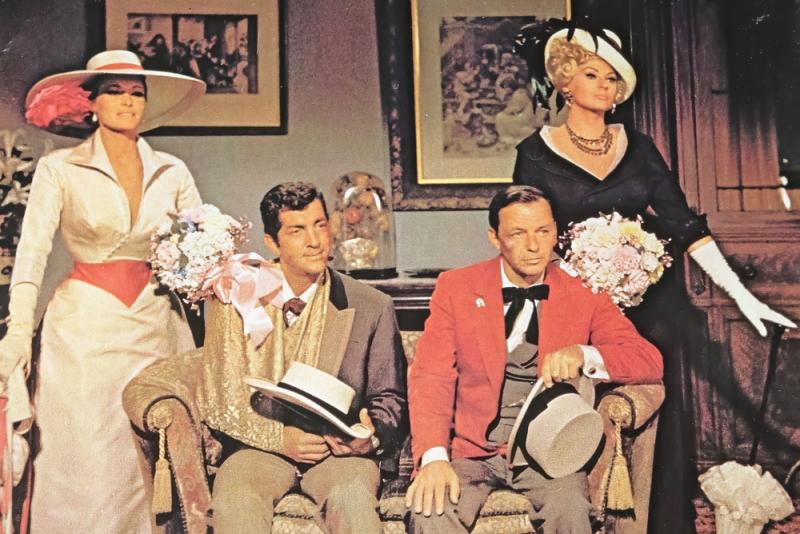It’s Italian-American Heritage Month and our celebration wouldn’t be complete without acknowledging those musical anthems heard ‘round the world — think Dean Martin’s That’s Amore, Louis Prima’s Buona Sera, Frank Sinatra’s Come Fly With Me. These sorts of tunes are part of a genre of love songs and romanticized odes to the “old country,” yet many of their singers never experienced the old country firsthand. Some of the most iconic Italian-American showmen of the 1950s and beyond inherited their sounds of soulful yearning from a generation whose voices have been much more subdued in mainstream pop culture. Here’s a closer look at who and what really paved the way for Frank, “Dino” and others to fly.
Building the Neapolitan name
The Italian-American musicians of the early 20th century primarily sang canzone napoletana, of which ‘O Sole Mio might be the most recognized example (though famously sung by beloved tenors Enrico Caruso and Luciano Pavarotti in 1916 and 1979, it was written in 1898). The next generation would take it to new levels of fame that reached beyond the immigrant experience.
“The recurrent themes of this song tradition generally revolve around eternal pain of the loss of love, a feeling identified with the beloved woman, but often also with the city itself,” writes Simona Frasca in her book Italian Birds of Passage: The Diaspora of Neapolitan Musicians in New York. According to Frasca, Neapolitan music had “specific local and ethnic associations” until the turn of the 20th century, when it became “a commodity of mass culture projected into the territories of the nascent transnational culture.”
One of the most famous songbirds of this era was Gilda Mignonette, who earned the nickname Queen of the Immigrants. Born in Naples, she was already a renowned singer in Italy when she moved to New York in 1925, expanding her career to become an international star. But she wasn’t the only one. More music and language recordings had been made by Italian-Americans by 1940 than by any other English speaking group, according to Joseph Sciorra, Director for Academic and Cultural Programs at Queens College.
This generation of musicians that popularized Neapolitan song included the vaudevillian Eduardo Migliaccio; Ria Rosa, a feminist and antifascist who in one song extols the freedoms of the 20th century for a woman; Alfredo Bascetta, who sang of real-life events in the Italian-American community; and Francesco Pennino, a composer and the grandfather of film director Francis Ford Coppola (of The Godfather fame). They sang in Italian — or rather, Neapolitan — perhaps what kept them from reaching the levels of fame the subsequent generation, who sang mostly in English, would enjoy.
The next generation of bella Napoli (and beyond)
Following a decline in the era of swing bands post World War II, soloists began breaking out on their own. Some of the most prominent one-man shows on the scene were the smooth Italian-American crooners of the 1950s and ’60s: Frank Sinatra, Louis Prima, Dean Martin, Tony Bennett and Perry Como, to name a few. What made them major stars was their cross-media presence in radio, television and film.
Genre blending was big for this new generation. They drew inspiration from sources including folk music, the emerging pop sound of Bing Crosby and African-American jazz. More than singers, they were charismatic storytellers who evoked a very Italian penchant for the overly romantic and emotional — an essence that first reached American ears with those earlier Neapolitan immigrants.
Prominent Italian-American storytellers of today have spoken of the importance of preserving this legacy. Film director Martin Scorsese, whose work has often centered Italian-American experiences (and whose soundtracks have often featured iconic Italian-American performers), once called Italian immigrant music making “something that is so essential to really understanding and appreciating the contribution of Italian-Americans in this country.”
Listen, understand, appreciate
Dig deeper into the original Neapolitan sound with these famous songs by Italian-American singers from the early 20th century.
‘A Cartulina ‘e Napule by Gilda Mignonette
Preferisco il ‘900 by Ria Rosa
Senza Mamma by Francesco Pennino
‘O napulitano in America by Alfredo Bascetta













